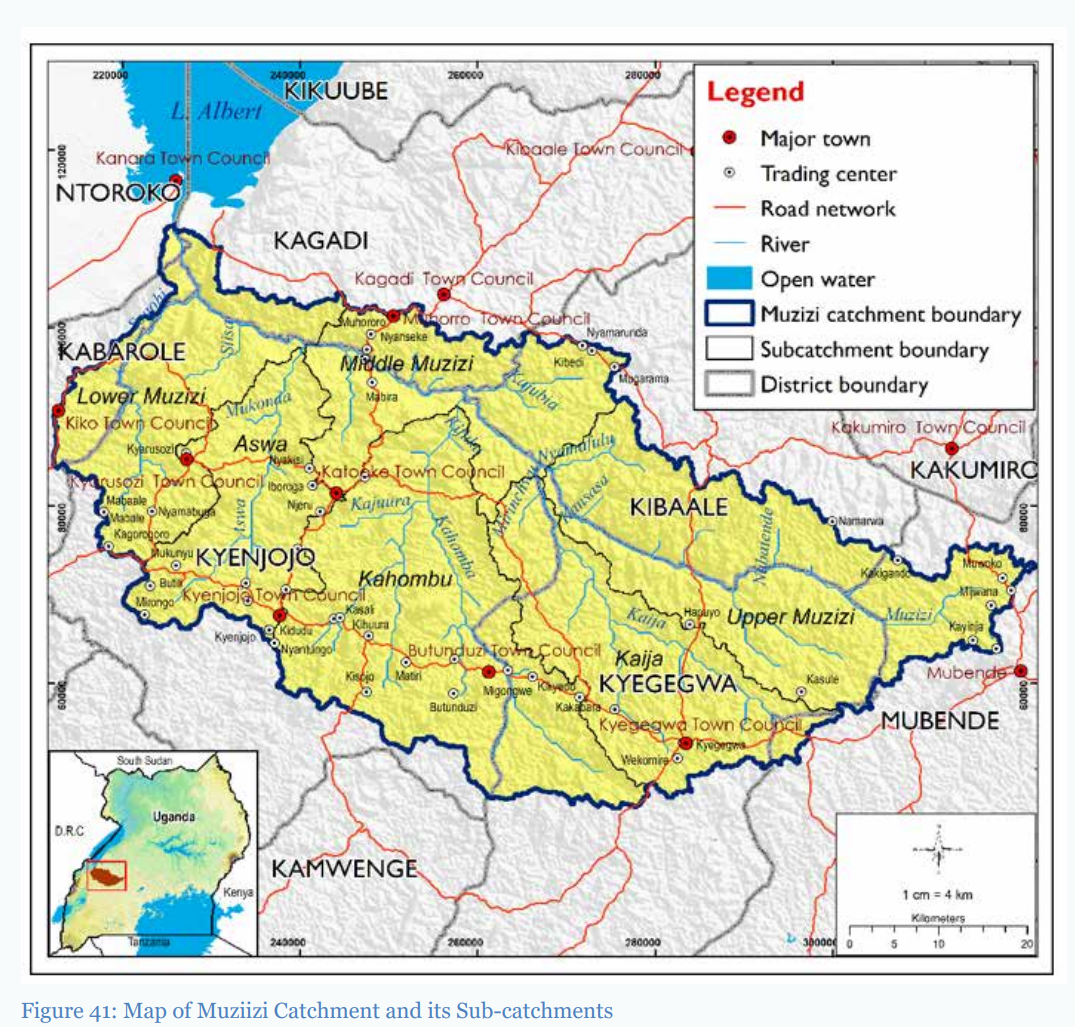Catchment is the action of collecting water, especially the collection of rainfall over a natural drainage area. A catchment area is, therefore, a geographical location from which rainfall flows into a river, lake, or reservoir.
Catchments and people living in the catchments in the Nile River Basin are affected by the following key issues: Poor access to safe water supply, limited access to improved sanitation facilities, deforestation on private and public land, encroachment on protected areas, encroachment on wetlands and river banks, limited access to markets, low agricultural productivity, limited value addition to agricultural produce, post-harvest losses of agricultural produce, and poor quality agricultural produce.
NELSAP Catchment Management is aimed at supporting the reversal of catchment degradation, increased ecosystem resilience and productivity, and improved community livelihoods. To support countries to develop catchment management plans, NELSAP first considers the existing guidelines for management of catchments as provided for in countries’ constitutions, national policies, national legislations, trans-boundary cooperative frameworks, and International Conventions. The process of catchment management considers the following key elements.
- Development of the catchment knowledge base.
- Water resources assessment,
- Stakeholder engagement and
- Strategic Social and Environmental Assessment (SSEA).
From the assessments, major issues and challenges, opportunities, threats, and risks within the catchment are identified. Based on the identified issues, a catchment vision, strategic objectives, and options for managing the issues are developed in a stakeholder-driven process. A set of investment and management actions for each option are proposed and costed including a timing for their implementation.
The objectives of Catchment Management are: To promote conservation of the wetland ecosystem and its catchment, to promote and support sustainable sources of livelihoods for the communities dependent on the wetland, to support the establishment and strengthening of governance structures for the management of the wetland.
Wetlands provide innumerable services that underpin food security, human well-being and indeed, the global economy. These services are rarely valued in terms that are entered into economic debates within local, national and regional planning processes, and are thus o...
Sio-Siteko Catchment Management Plan
Wetlands provide innumerable services that underpin food security, human well-being and indeed, the global economy. These services are rarely valued in terms that are entered into economic debates within local, national and regional planning processes, and are thus often traded away inappropriately. For transboundary wetlands, this lack of prioritisation is more evident. This is the case for the Sio-Siteko transboundary wetland, where sand harvesting, charcoal burning, wetlands encroachment and other exploitative activities have resulted in landscape degradation and loss of ecosystem services. These examples are only the tip of the iceberg. Given the complexity and interdependencies of nature, there are many risks that spell disaster for the communities that depend on the wetland ecosystem, thus signalling urgent action, including the adoption of pragmatic solutions that will deliver strong conservation and socio-economic outcomes.
The Sango Bay - Minziro wetland landscape is a transboundary wetland system located west of Lake Victoria and lies at the boundary between Uganda and Tanzania. Within Uganda, the wetland landscape is concentrated in the Kyotera and Kakuuto counties in Kyotera Distric...
Sango Bay-Minziro Catchment Management Plan
The Sango Bay - Minziro wetland landscape is a transboundary wetland system located west of Lake Victoria and lies at the boundary between Uganda and Tanzania. Within Uganda, the wetland landscape is concentrated in the Kyotera and Kakuuto counties in Kyotera District. It is an Important Bird Area providing habitat and breeding ground for diverse bird populations and is part of the Sango Bay - Musambwa Island - Kagera Wetland System (SAMUKA) Ramsar site established in Uganda in 2006. In Tanzania, the bulk of the area lies within Missenyi District, with smaller portions in Bukoba Rural and Bukoba Urban Districts. Here, the south-western boundary encompasses the Minziro Forest Reserve. This nature reserve is rare in the region as it represents an ‘outlier’ of a forest habitat type otherwise found in central and western Africa, and as such it holds quite a unique combination of species for Tanzania.
Wetlands are fundamental for our collective wellbeing, providing essential ecosystem services and opportunities for sustainable economic growth. Despite this, the negative trajectory for these fragile ecosystems has kept its own pace, more so for transboundary wetlan...
Semliki Delta Catchment Management Plan
Wetlands are fundamental for our collective wellbeing, providing essential ecosystem services and opportunities for sustainable economic growth. Despite this, the negative trajectory for these fragile ecosystems has kept its own pace, more so for transboundary wetlands. The Semliki Delta transboundary wetland is no exception: wetland resources are increasingly overexploited; loss of species diversity and abundance is accelerated; extractive industries threaten to open up new fronts; and the impacts of climate change have already significantly disrupted this ecosystem. This spells disaster for the communities that depend on the wetland ecosystem, thus signalling urgent action, including the adoption of pragmatic solutions that will deliver strong conservation and socio-economic outcomes.


